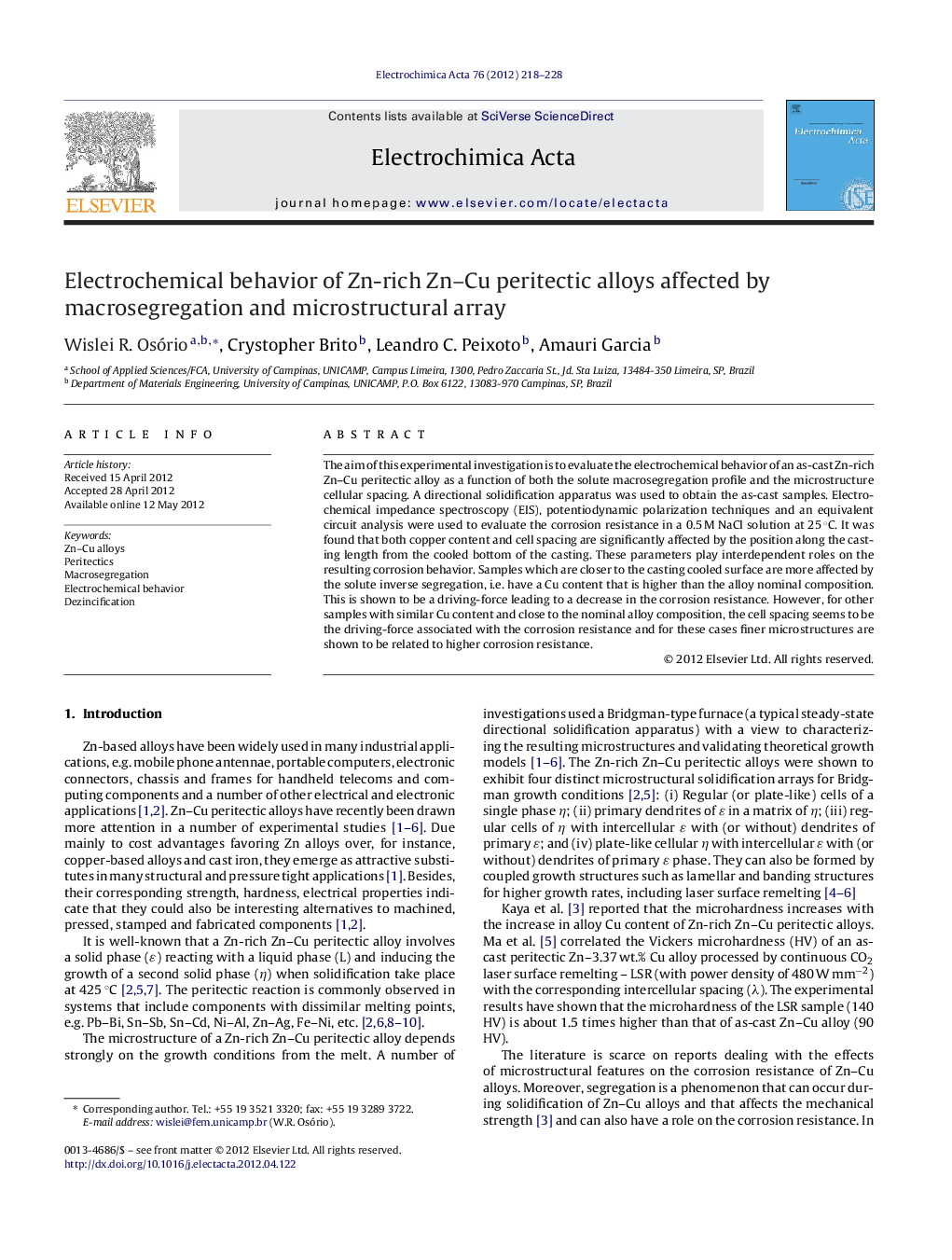| Article ID | Journal | Published Year | Pages | File Type |
|---|---|---|---|---|
| 188207 | Electrochimica Acta | 2012 | 11 Pages |
The aim of this experimental investigation is to evaluate the electrochemical behavior of an as-cast Zn-rich Zn–Cu peritectic alloy as a function of both the solute macrosegregation profile and the microstructure cellular spacing. A directional solidification apparatus was used to obtain the as-cast samples. Electrochemical impedance spectroscopy (EIS), potentiodynamic polarization techniques and an equivalent circuit analysis were used to evaluate the corrosion resistance in a 0.5 M NaCl solution at 25 °C. It was found that both copper content and cell spacing are significantly affected by the position along the casting length from the cooled bottom of the casting. These parameters play interdependent roles on the resulting corrosion behavior. Samples which are closer to the casting cooled surface are more affected by the solute inverse segregation, i.e. have a Cu content that is higher than the alloy nominal composition. This is shown to be a driving-force leading to a decrease in the corrosion resistance. However, for other samples with similar Cu content and close to the nominal alloy composition, the cell spacing seems to be the driving-force associated with the corrosion resistance and for these cases finer microstructures are shown to be related to higher corrosion resistance.
► Segregation and microstructure affect electrochemical behavior of Zn–Cu alloys. ► Cu segregated to the surface has a deleterious effect on the corrosion resistance. ► Finer cell spacing is related to higher corrosion resistance for similar Cu content.
